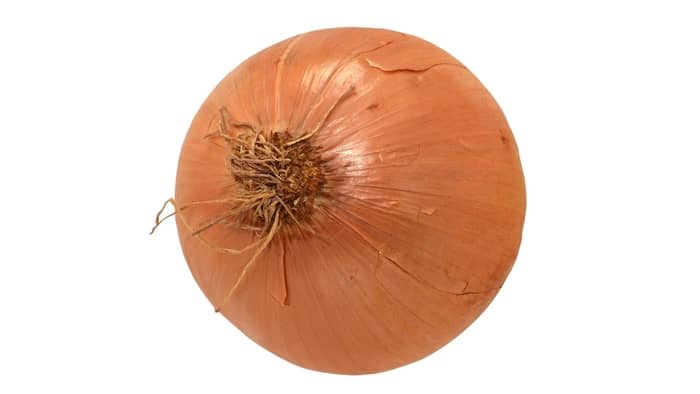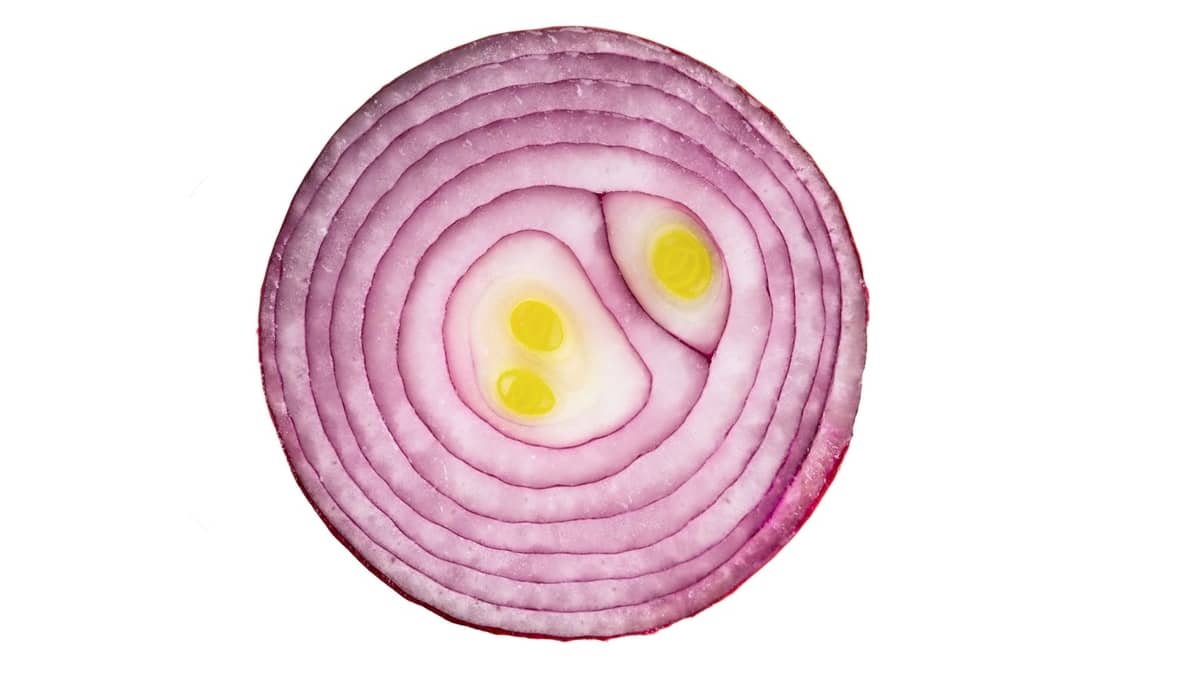Last Updated on December 27, 2022 by Griselda M.
Onions are a staple food in many kitchens and a common ingredient in many dishes across different cultures of the world. But do you know what the different parts of onion are? If you are interested in knowing about these different parts, let’s get learning.
Introduction
You have probably eaten so many onions in your life over the years without much thought about the different parts of this vegetable. This seemingly simple vegetable has different parts that serve different functions in the growth, functioning, and reproduction of an onion. Let’s learn about them, shall we?
A bit of background about the onion
The onion (Allium cepa L) is a widely cultivated root vegetable belonging to the genus Allium. It has many botanical varieties and is closely related to other vegetables such as garlic, scallions, leeks, and chives. The onion is a perennial or biennial plant but is mostly treated as an annual. When it is planted, it grows as green leaves aboveground and a bulb in the soil that has roots at the bottom.
Onions have been cultivated and bred for over 7000 years, which is why they are very well established. They are grown across the world and are used for the preparation of savory dishes, can be pickled, and also be used for non-culinary purposes such as hair growth oil.
Modern varieties of onions grow to about 6 to 18 in height and produce onion leaves of different shades of green depending on the variety and soil conditions in which the plants are grown. The underground parts or bulbs of the onion also come in different colors such as white, yellow, and red. All these onions have a pungent smell that adds wonderful flavors and aromas to foods. Onions can be eaten raw or cooked. When raw, however, they have certain substances that can cause eye irritation.
The Different Parts of an Onion
The onion has different parts that we shall now discuss.
Leaves
First, it has 2 different types of leaves, that is scaly leaves and fleshy leaves. These are differentiated according to their position, look and texture or feel.
- Scaly leaves are the dry, scaly, outermost part of the onion. These started as fleshy leaves over time and changed to become the way they are. The function of the scaly leaves is mostly protection for the rest of the bulb. These leaves protect the inner, softer parts of the onion bulb against pests and friction, giving the bulb room to grow.
- The fleshy leaves are the most consumed part of an onion. Their primary function is to store antioxidants and nutrients such as flavonoids, anthocyanins, propanethial S-oxide, dimethyl Sulphate, and some vitamins and minerals.
Both the fleshy and scaly leaves of the onion have no photosynthetic activity as they receive no sunlight because they grow underground. They do however possess a lot of nutritional benefits and serve important functions for the onion.
2-Pack 7-Gallon Garden Vegetable Planter with Flap and Handles
The bud
Inside the leaves is a small central bud at the tip of the stem. The bud is composed of embryonic cells that divide and multiply. The function of these cells is to help the onion grow. This bud is also where the flowers shoot out from. The flowers will eventually produce onion seeds.
Axillary buds
Around the central bud are axillary buds which are also important in the growth of the onion. They are specifically responsible for lateral growth as opposed to the central bud which is responsible for vertical growth.
The entire onion is often referred to as a modified stem. The condensed stem cells in an onion support the vital functions of the other parts of the onion and also transport nutrients to the bulb and roots of the plant.
All these parts described above make up the bulb of the onion, which is what we call “the onion”.
The roots
At the base of this bulb are short roots which extend a short way into the soil. These roots are called adventitious roots and are responsible for supporting the whole plant. They absorb all the nutrients and minerals from the soil, that the plants needs. Essentially, without these roots, the whole onion plant would not survive.
Green leaves
Aboveground are the leaves of the onion plant, different from the leaves of the bulb. These leaves are often green in color, fleshy, and fan-shaped. They alone can be used for culinary purposes and are actually regularly harvested and used even before the underground part of the onion, or the bulb is used.
Which Part Of The Onion Do You Not Cut?
If you’re wondering which part of the onion do you not cut to prevent irritation and flare-ups, then take heed of the following information. We all know that onion is the number one culprit in producing teary eyes when slicing through them. To prevent this from happening and to keep the irritant gasses away from your eyes, it is best to leave the onion root intact.
Additionally, while the root is uncut, you can remove the onion skin before you begin slicing them into the desired pieces. This procedure worked quite well as the onion root has a very high concentration of sulfur that instantly irritates the eyes.
Which Part Of Onion Should Not Be Eaten?
Recently, someone asked me, which part of the onion should not be eaten. I had to actually sit back and think about it because when cutting onion, we do get rid of the peel and root ends. However, I never thought about why we do so.
Could it be that it’s not edible? I did some digging and found out that every part of the onion can be eaten. So, there;’s actually no section that is not edible. What I found is that many people use the peel and root to make homemade onion powder, while the rest is eaten raw or used for cooking. Onion powder is made by dehydrating the onion waste in the oven, allowing it to cool, and then blending it into a fine powder. You can also consume the onion stems, flowers, and green spouts as they all have similar flavorings.
How Many Ounces is an Average Onion?
Ever wondered how many ounces are in an average onion? If you don’t have a kitchen scale, there are no worries as I have the answer for you. An average-sized onion can weigh anything between six and eight ounces depending on where and how they are cultivated.
This size onion would also add up to about half a cup when diced or sliced. While small onions are about half the size of an average-sized one, larger varieties can weigh up to 16 ounces or a cup and a half when diced. To determine whether you have small, medium, or large onions, you can make an almost accurate estimate without a kitchen scale. This is because a small one would give you a quarter cup of diced onions while a medium one would be half a cup when sliced. A large one on the other hand can be anything from a full cup to a cup and a half when chopped up.
What is The Family Name Of Onion?
Do you want to know what is the family name of the onion? Onions are consumed throughout the world daily so, I believe that knowing a little bit of history about them would be great. The genus Allium which includes aromatic plants like onions is in the lily family which this commonly used vegetable belongs to. For this reason, onions are often referred to as the stinking lily because of their potent aroma. They have distinctive aromatic properties like that of their cousin plants and are also used for medicinal purposes.
Within the Allium genus, you would find a wide range of species which include vegetable plants like shallots, garlic, chives, and leeks which all have distinctive aromas. Most of these plants, including onions, are an important part of our daily diets and are used extensively to enhance and complement different cuisines around the world.
Conclusion
This article taught you about the different parts of an onion as well as the different roles and functions these parts have. The next time you are chopping an onion to make your favorite dish or salad, take some time to appreciate this wonderful plant and all the complexities that go into making it the way it is, now that you know it is not as simple as a vegetable as it appears.
If you enjoyed this article, please share.

FAQs
Can I grow onions in my house?
Onions are hardy plants and easy to grow indoors. Green onions, or scallions, are popular with indoor and casual gardeners because of how easily they grow.
What is the difference between an onion and a shallot?
Shallots have a delicate and sweet flavor with a hint of sharpness, while onions bring a more intense heat.
Branko is the world‘s most enthusiastic gardener! He is always on the hunt for the perfect flower, bush or tree to add to his ever–growing garden. He is known for his love of all things green, and his passion for nurturing the plants he grows is unmatched. He loves to get his hands dirty and can often be found humbly tending to his garden at all hours of the day. Branko is the go–to guy when it comes to gardening advice – he is always happy to share his knowledge and wisdom with anyone who will listen. He also loves to play pranks on unsuspecting visitors, so beware if you enter his garden!


